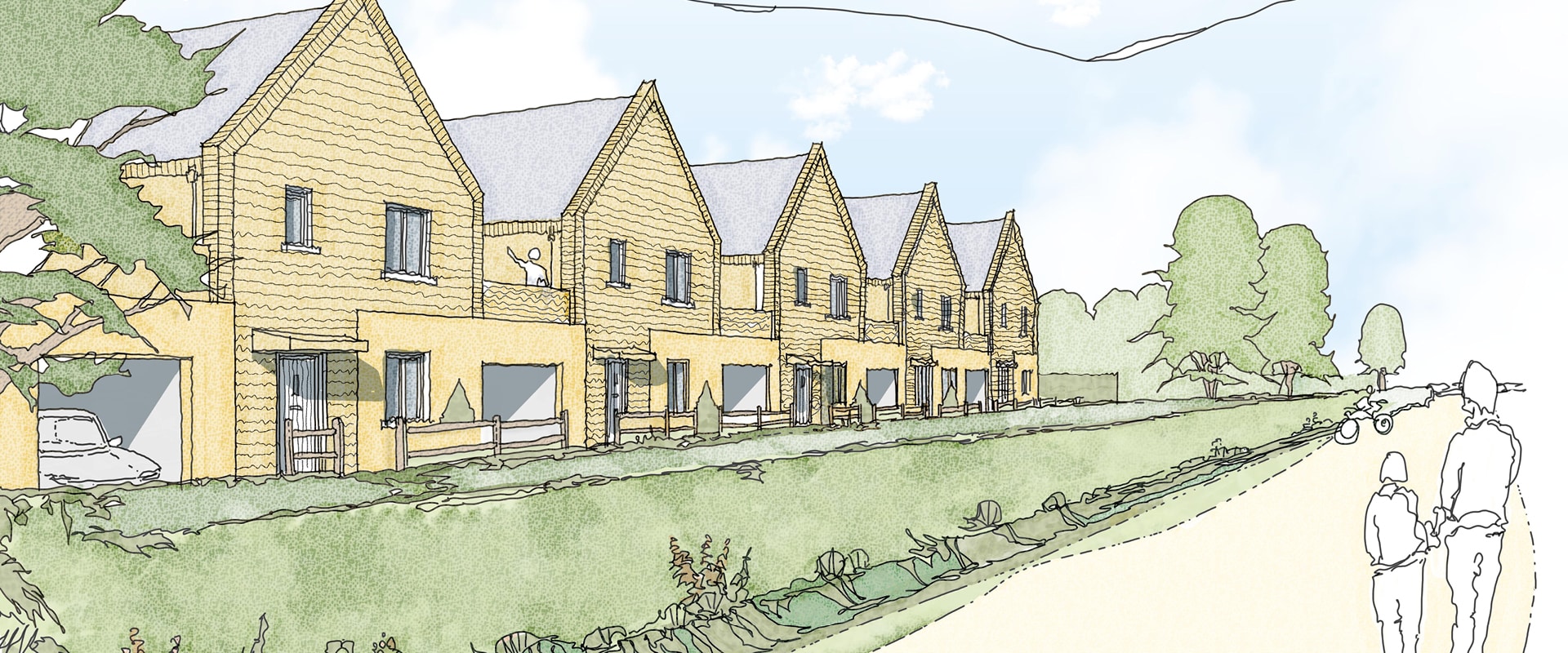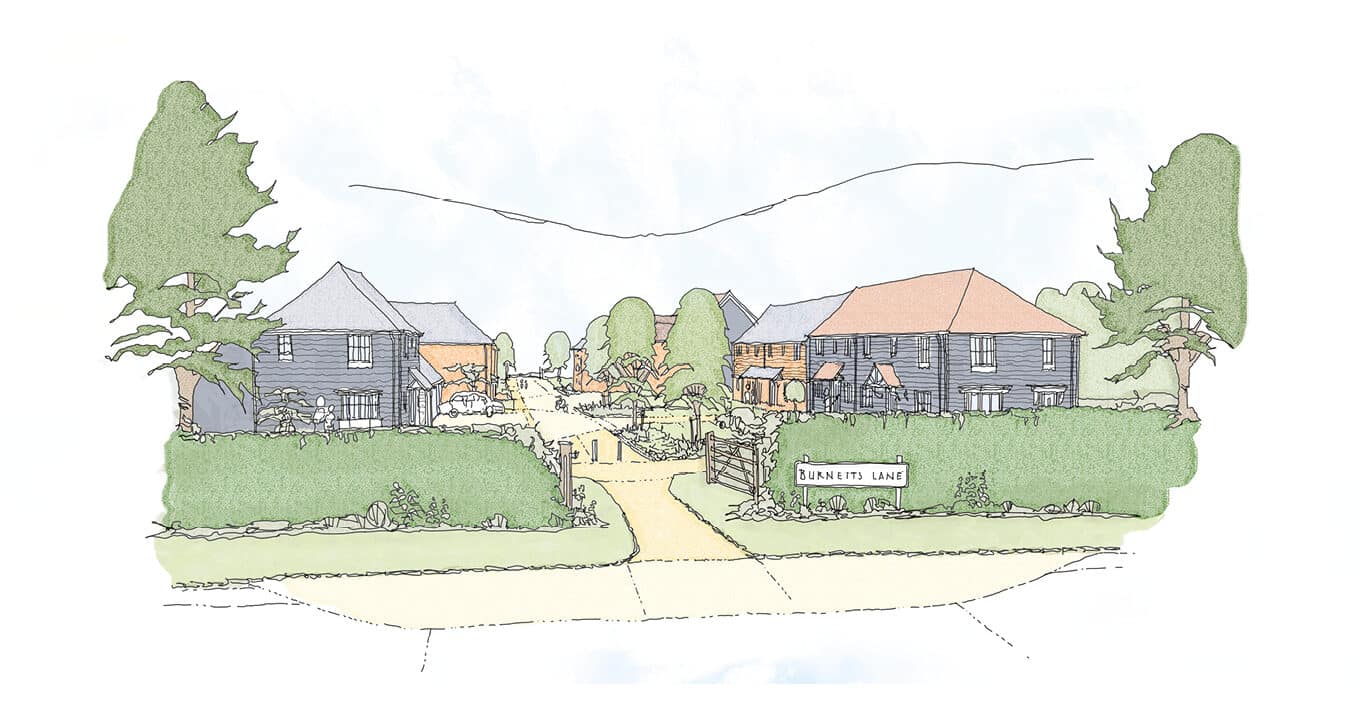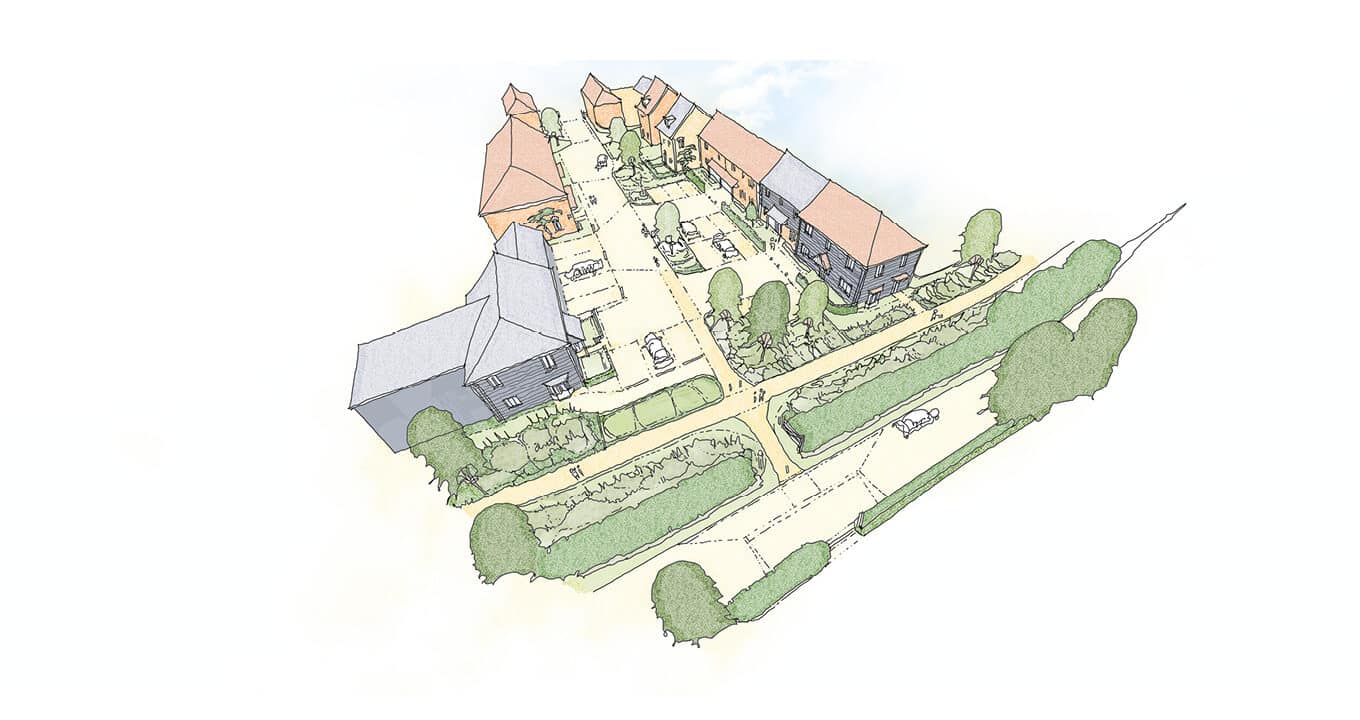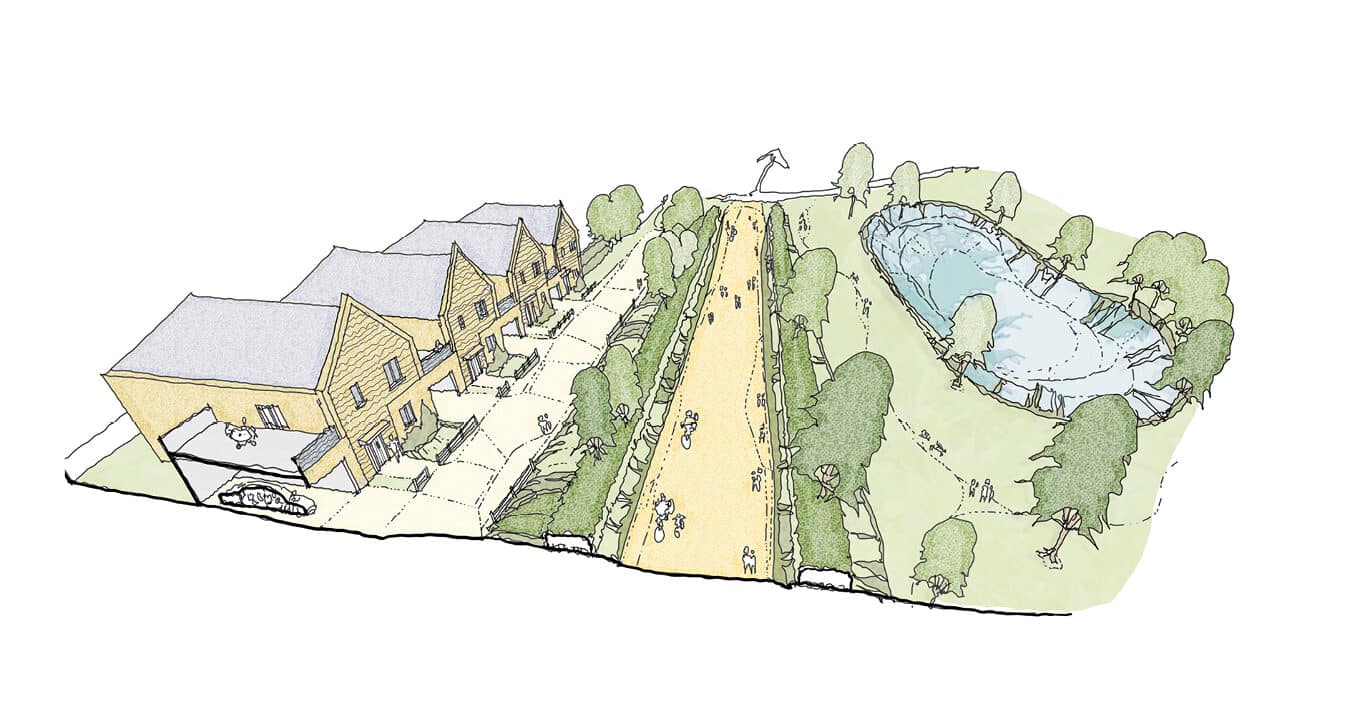The Horton Heath scheme will see the development of a Greenfield site into a residential lead scheme comprising approximately 2,200 new homes, a mixed use local centre of 1.5-2.0 hectares total area, comprising shops, a café, a transport hub and community buildings, B1 or B2 employment uses at the southern gateway of the site, non-residential uses within the curtilage of Victoria House and Fir Tree Farmhouse (heritage and listed building), a primary school, early years education facilities, possible small scale employment and retail uses at Chalcroft Farm and green infrastructure.
We are appointed to support a new outline planning application for the site and Net Zero strategy; including a Energy from Waste viability study, a zero carbon and water recycling feasibility study, and Electrical Vehicle charging strategy, sustainability consultancy, a BREEAM Communities assessment, a Nitrate Deposition Impact Study and a utilities viability and planning statement.
We have been appointed to review whether there is value, and ideally financial value, in co-locating a package sewage treatment plant and a Borough-wide food waste hub at the proposed Horton Heath residential development site. More specifically we considered whether anaerobic digestion of food waste and sewage sludge at the Horton Heath development would be a viable means of generating energy and reducing environmental impact. We explored risks and benefits, ultimately demonstrating the value to each stakeholder of the preferred options, including a coarse assessment of the return on investment to EBC and their partners. In this regard we have presented findings to the key stakeholders, i.e. EBC and Southern Water.
We were separately commissioned to develop a ‘Net Zero Carbon’ and ‘Ultra-low Water Consumption’ feasibility study for the Horton Heath emerging masterplan. The study includes consideration for reducing demand-side energy, energy efficiency measures, the feasibility of micro and community energy generation, onsite and offsite renewable energy generation, local and community water recycling opportunities, design and build opportunities and risks, procurement, ownership and governance opportunities and risks, and consumer comfort and adoption. The study aligns with the latest industry guidance, such as the UKGBC Net Zero Carbon Definition Framework(April 2019)
We have been commissioned to develop an enhanced nitrate neutrality approach for its circa 1,400 dwelling 125 ha scheme at Horton Heath, with a number of the elements comprising the Natural England methodology either being refined or investigated further in order to provide a more realistic, yet suitably precautionary approach. This has included assessing the vulnerability of downstream European Designated Sites to nitrate loadings, site visits and interviews with current farmers of the site on cropping, livestock and farming practices, modelling current agricultural, domestic and commercial N-inputs (e.g. fertiliser and manure applications, sewage generation etc) and outputs, predicting nitrate loadings from the proposed scheme and recommending suitable mitigation measures.







